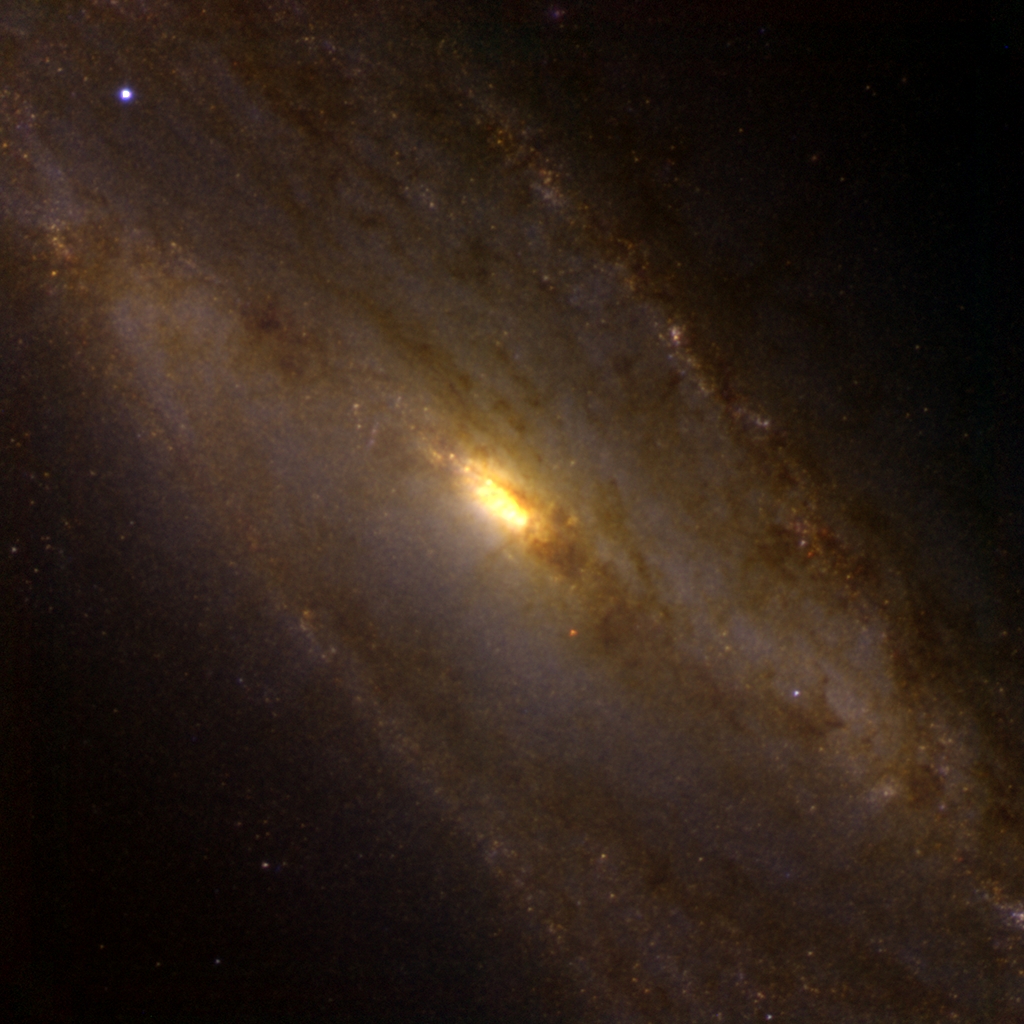
NGC 253, a bright spiral galaxy in true colours
Credit: Image courtesy of JL Beuzit1, R. Doyon2, B. Calder3, & M. Riopel2
1 Observatoire de Grenoble, France
2 Université de Montréal, Canada
3 CFHT, Hawaii

NGC 253 is one of the brightest and nearest galaxies located outside
the Local Group of Galaxies, the group our Milky Way is part of,
together with M31, the Andromeda galaxy. It is the brightest member of
the so-called Sculptor
group. The group is centered in the constellation "Sculptor".
This excellent image shows elements that are typical of spiral
galaxies: it has a complex structure of clumpy gas, dark dust lanes,
and spriral arms. The central star clusters also appear very luminous
at the center of this near-infrared view of the galaxy.
NGC 253 was discovered by chance in september 23rd, 1783, by Caroline
Herschel, the sister of the famous astronomer William Herschel, as she
was looking for comets!
On this color-composite image, the true orientation of the object is
conserved, with North up and East to the left. The final image was
obtained by combining three images taken in the I-, H- and K-bands, at
800nm, 1600nm and 2200nm respectively. Total exposure time was about
10 minute on-source in each filter.
CFHT-IR, similarly to KIR, is
based on a Rockwell 1024 X 1024 HAWAII chip. Its full field of view is 3.6 X 3.6
arcminutes. CFHT-IR can operate from 0.8microns to 2.5microns. It can also
be fitted behind the
OSIS spectrograph to provide near-infrared
multi-object spectroscopic capabilities in the 1.1 to 1.8 micron window.
A complete description of CFHT-IR can be found on this web
site.
Technical description:



